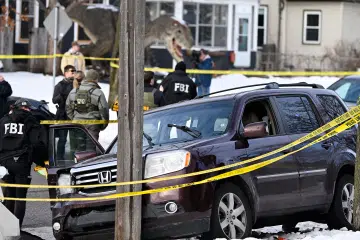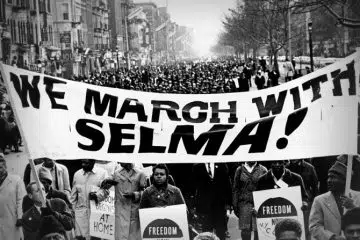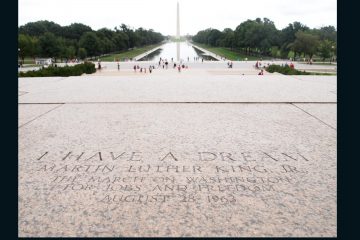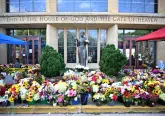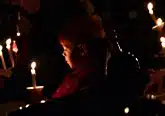Back to School Should be a Time of Joy, Not Fear
August begins the annual ritual of children dragging their parents to the shopping mall for new clothes, backpacks and sneakers, in preparation for their return to classrooms, playgrounds and athletics fields. The nervous anticipation of going “back to school” is as common to the American experience of growing up as apple pie and baseball. Perhaps the only school day more highly anticipated than the first is the last. These rites of passage are generally happy occasions, ordering students toward eventual graduation while protecting them in the envelope of close-knit friendships and dedicated educators. Our school days form lasting impressions and persistent memories.
Unfortunately, the idyllic experience of going back to school has been significantly compromised in recent years, such that those impressions and memories are not necessarily fond ones. In musician Jason Isbell’s recent song, “Save The World,” the first-person narrator sings about learning of a school shooting after traveling: “I left my wallet in the hotel room/They barely let me on the plane,” he sings. “I didn’t get a chance to check the news/Somebody shot up a classroom again.” He goes on to say that, while it is appropriate to mourn the loss, that does not solve the problem. “We can find a time to fall apart/Say the name of all the dead/I’m still dreaming in my heart of hearts/But something’s changing in my head.” He wants to feel that “things like that” can’t happen to him or the ones he loves. But he must acknowledge that he is no less likely than anyone else to be affected by such a tragedy.
The singer’s concerns in “Save the World” are well-founded. According to data compiled by NBC News, during the last 10 years in the U.S., 110 children, teachers and administrators were killed in school shootings and an additional 160 injured. In only one of those 10 years, 2020, were there no shooting fatalities. This year, nine people were killed and eight injured in four separate school shootings before school adjourned in the Spring. These data omit shootings and other gun incidents (at schools) that were prevented or did not result in injuries or death, including 249 incidents of shootings or attempted shootings in 2021, the highest on record. The next highest number of incidents, 199, occurred in 2019. The highest annual number of fatalities, 51, occurred in 2018, including 17 at Marjory Stoneham Douglas school in Florida.
The shooters are almost always students or former students, and the most common age is 17, then 16 and 15. The National Institute of Justice (NIJ)—a U.S. Department of Justice research agency—suggests “Five Facts About Mass Shootings in K-12 Schools,” two of which stand out for special consideration. First, prior to the shootings, most or all shooters were known to have experienced severe mental illness, manifested in histories of antisocial behavior or even psychoses. More than 90% of them were found to be suicidal before or during the shooting. This does not excuse the shooters, of course. In most cases, people with mental illness understand that they are committing crimes and are rightly held accountable for them. But it does point out that parents and educators must be better equipped to see signs of mental illness and better educated about how to respond. Mental illness should be treated with the same seriousness and diligence as physical illnesses. This is not an easy task, of course. It is easier to recognize a broken arm than major depressive disorder. But we must be as willing to refer people who struggle with mental illness to healthcare professionals as we are with physiological maladies.
NIJ suggests that a second important factor is the ease by which school shooters obtained the guns used in their crimes. In its study, 80% of school shooters stole guns from family members who failed to adequately secure them, indicating the obvious problem of carelessness by gun owners. But we cannot ignore the broader issue of guns’ proliferation in American society, especially semi-automatic and automatic rifles and powerful handguns. I am not suggesting confiscating anyone’s guns. Nor am I denying gun ownership’s legitimacy for the purposes of hunting and self-defense. But we are impeded in the U.S. by the Second Amendment from having a robust conversation about the scope of that legitimacy, especially as recently interpreted by the United States Supreme Court. And States are inhibited from enacting reasonable restrictions on gun manufacture, distribution and ownership that could strike a balance between the legal right to own guns and the protection of society. Rethinking the Second Amendment might be the place to start in curbing access to guns whose design has nothing to do with hunting or self-defense—precisely the kinds most used in school shootings.
In Isbell’s song, “Save the World,” the concluding verses express the anguish many parents feel when sending their children to school. “The kid’s looking for the candy aisle/ School’s starting in a week/Lady says, ‘You have a lovely child’/I’m too terrified to speak.” And he desperately wonders about options to protect his child. “Can we keep her here at home instead?/Can we teach her how to fight?/Something’s changing inside my head/Something’s drowning out the light.” This should not be a decision that any American parent should be forced to make because of guns’ availability, proliferation and access by people who should not possess them. But we must be willing to rethink entrenched positions on these issues to shed light on possible solutions.
 Dr. Kenneth Craycraft is an attorney and the James J. Gardner Family Chair of Moral Theology at Mount St. Mary’s Seminary & School of Theology.
Dr. Kenneth Craycraft is an attorney and the James J. Gardner Family Chair of Moral Theology at Mount St. Mary’s Seminary & School of Theology.
This article appeared in the August 2023 edition of The Catholic Telegraph Magazine. For your complimentary subscription, click here.


